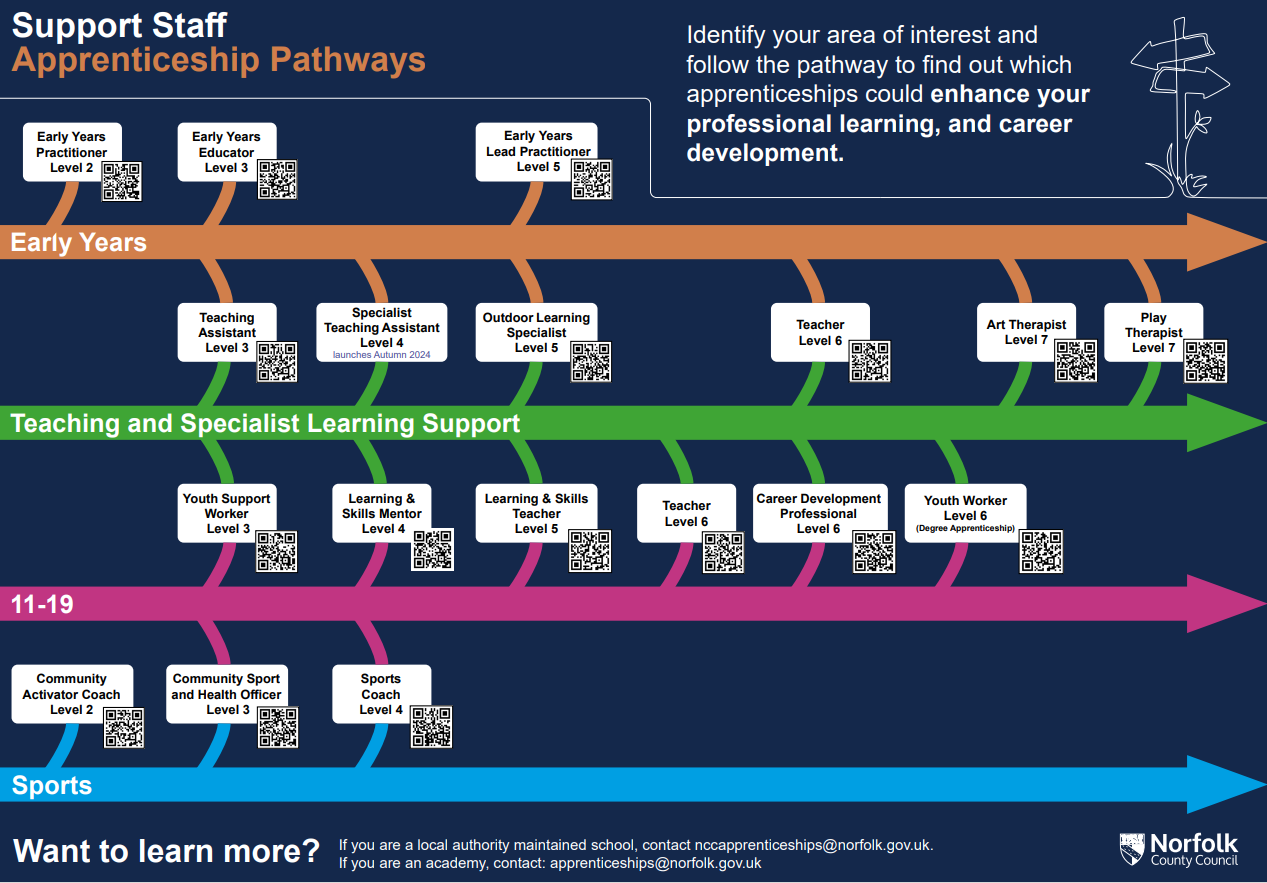Apprenticeships
Apprenticeships can be used as part of your strategic workforce planning, to promote a diverse and inclusive workforce and support recruitment and retention. A common use of the teaching apprenticeship is for TAs/HLTAs to become teachers in the school in which they already work.
The teaching apprenticeship is an initial teacher training (ITT) route that:
- Combines paid work with off-the-job training
- Leads to qualified teacher status (QTS).
Schools can employ apprentices but only accredited ITT providers can deliver the off the job training for the teaching apprenticeship.
Apprenticeship funding
Every employer with a payroll of over £3 million automatically pays 0.5% of total salary costs into the apprenticeship levy. This money is ring-fenced in an account and can only be used to fund apprenticeships. If the money is not used within 24 months, it reverts to the treasury.
- If your school is Local Authority Maintained (LAM), then the Local Authority is your employer and pays into the levy on your school's behalf.
- If your school is an academy, your academy trust is responsible for paying into the levy.
- If your parent organisation does not qualify for the levy, then it will pay just 5% of the cost of your apprenticeship training, with the government paying the rest.
Find out more about this here.
Your school will need to pay the apprentice's salary (which should be in line with the unqualified teacher salary scale), but can apply for grant funding to subsidise this (grants vary dependent upon subject and phase).
The teacher apprenticeship programme
The teacher apprenticeship replicates the same high standards for entry and completion as those already required of all ITT programmes.
On the teacher apprenticeship, the training provider will decide the overall structure, ensuring there is a good balance between teaching and learning.
The key difference between a teaching apprenticeship and other ITT routes is that an apprentice must spend at least 20% of their time in off-the-job training. This means time that is spent training and learning during their ordinary working hours, separate from their work duties. This could include activities such as time spent with a mentor, time spent participating in online learning or self-study. How the minimum 20% requirement is managed is up to the employer, working alongside the training provider.
Having completed their training, a teacher apprentice will be assessed to see if they demonstrate the knowledge, skills and behaviours contained within the Teachers’ standards, as part of their apprenticeship end-point assessment (EPA). The EPA period can be around three months; therefore for in-school apprenticeships the apprentice's contract should be for an academic year and one term.
The teacher degree apprenticeship programme
Unlike the postgraduate teacher apprenticeship, the apprentice will work in school while gaining QTS while also studying for a degree. Trainees will work under supervision at an appropriate level that is suitable to their stage of training.
This training route means trainees won’t take on student debt and will earn while they learn, supporting those who may not have the financial means to do a traditional university-based teacher training programme. It will be available for people to train as both primary and secondary teachers.
It is expected that applications for this apprenticeship will open in autumn 2024 for training to start in autumn 2025.
Teaching apprenticeship providers
Our partner NTTC is an accredited teaching apprenticeship provider.
Other apprenticeship pathways for your school


